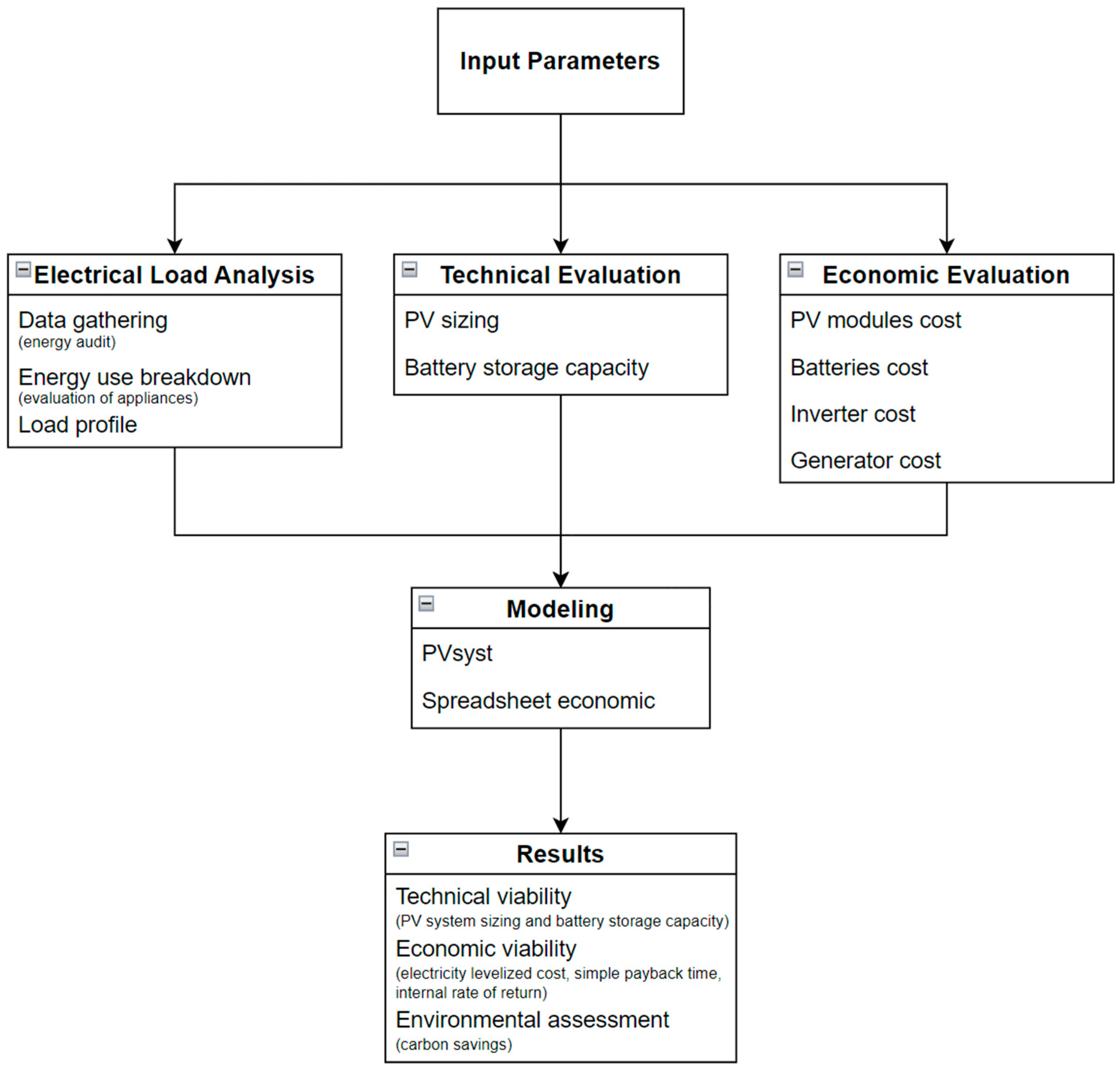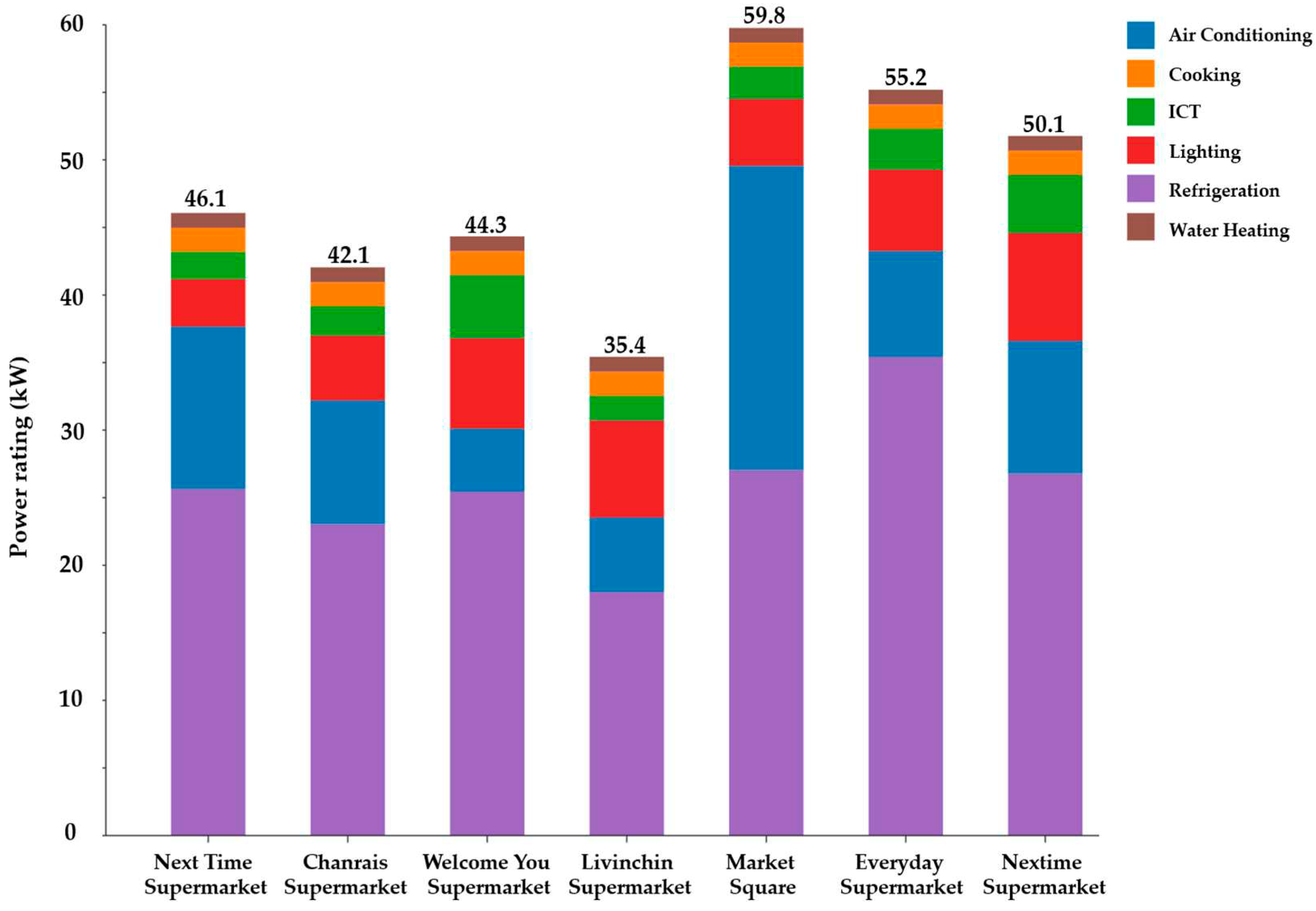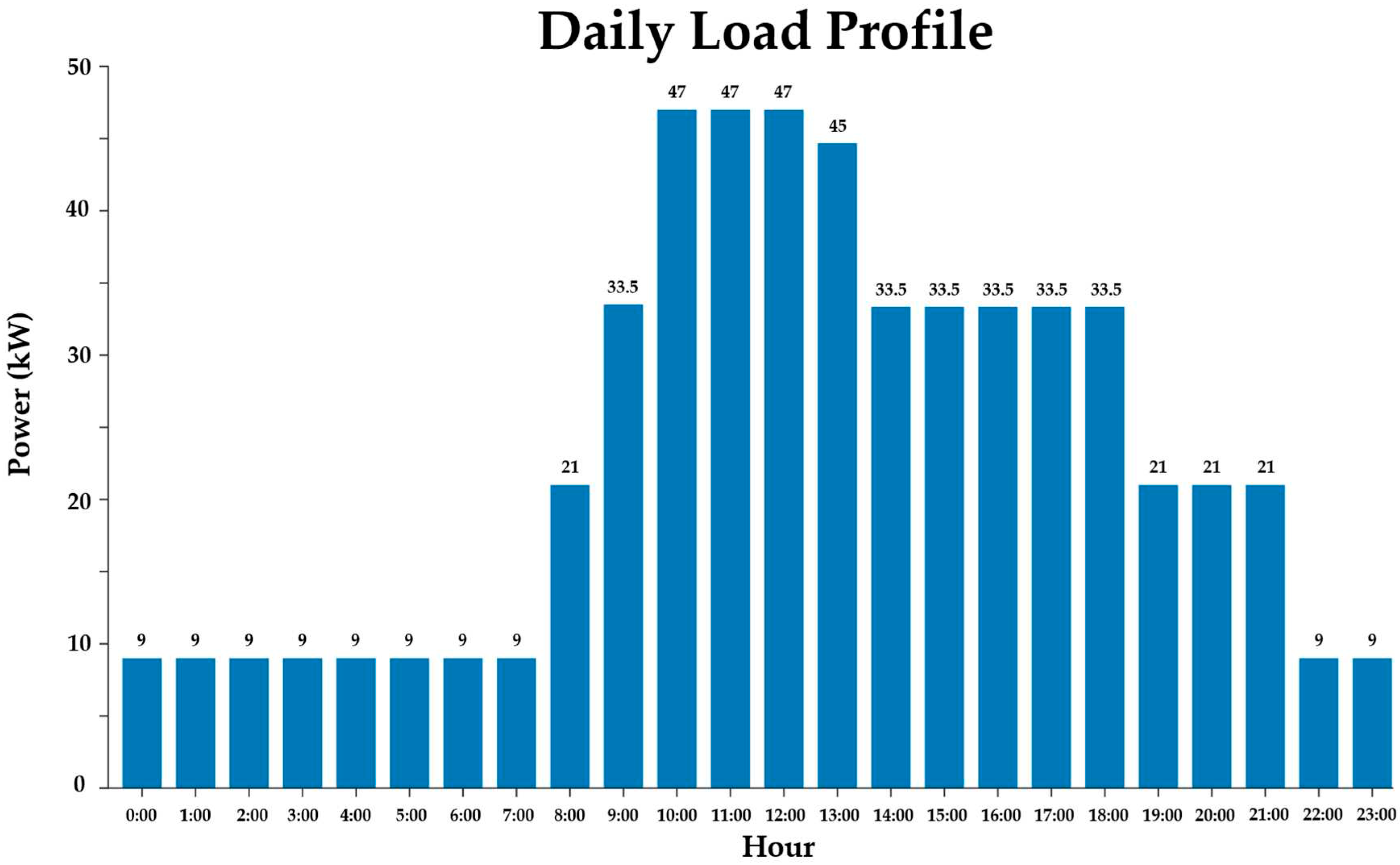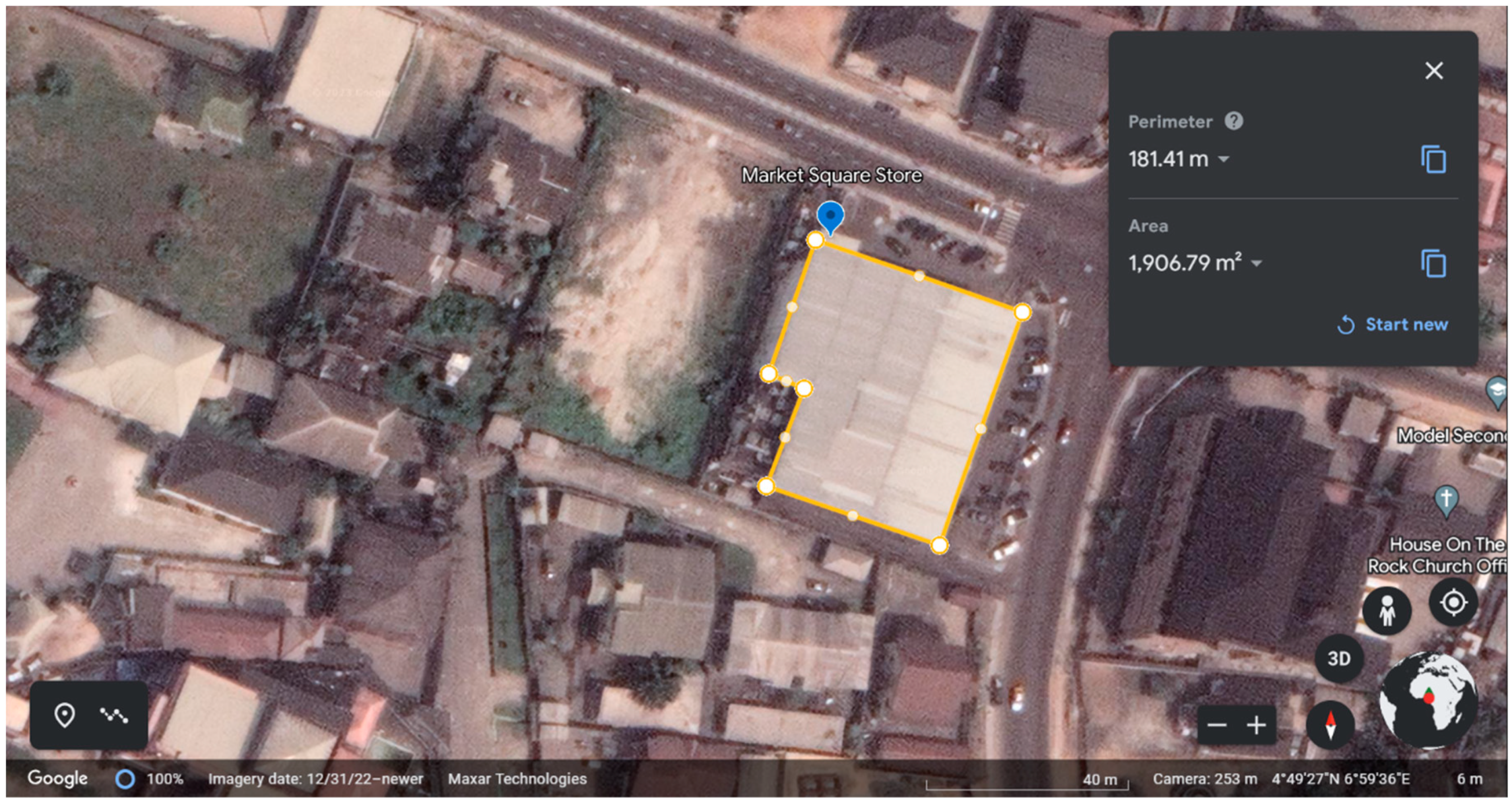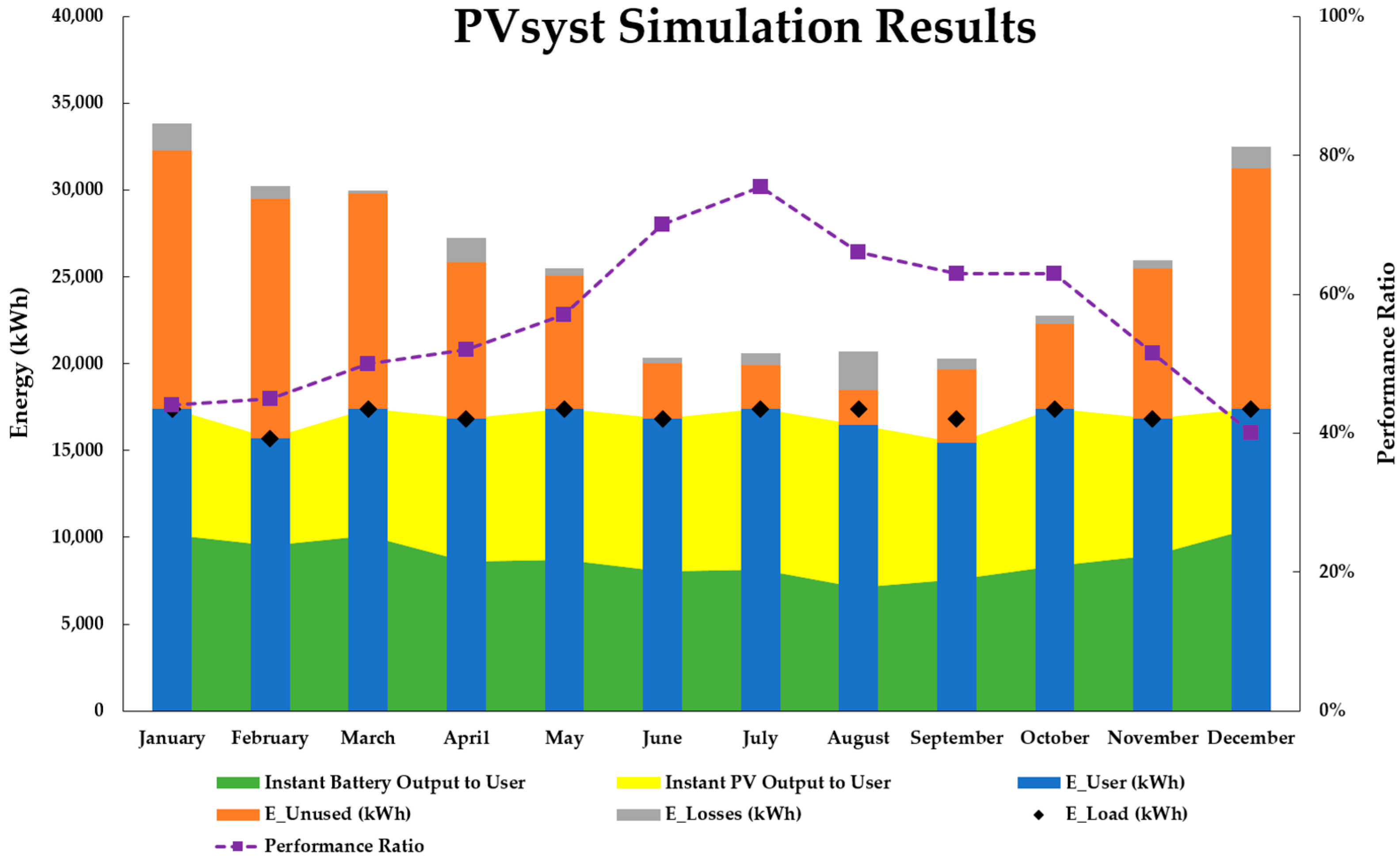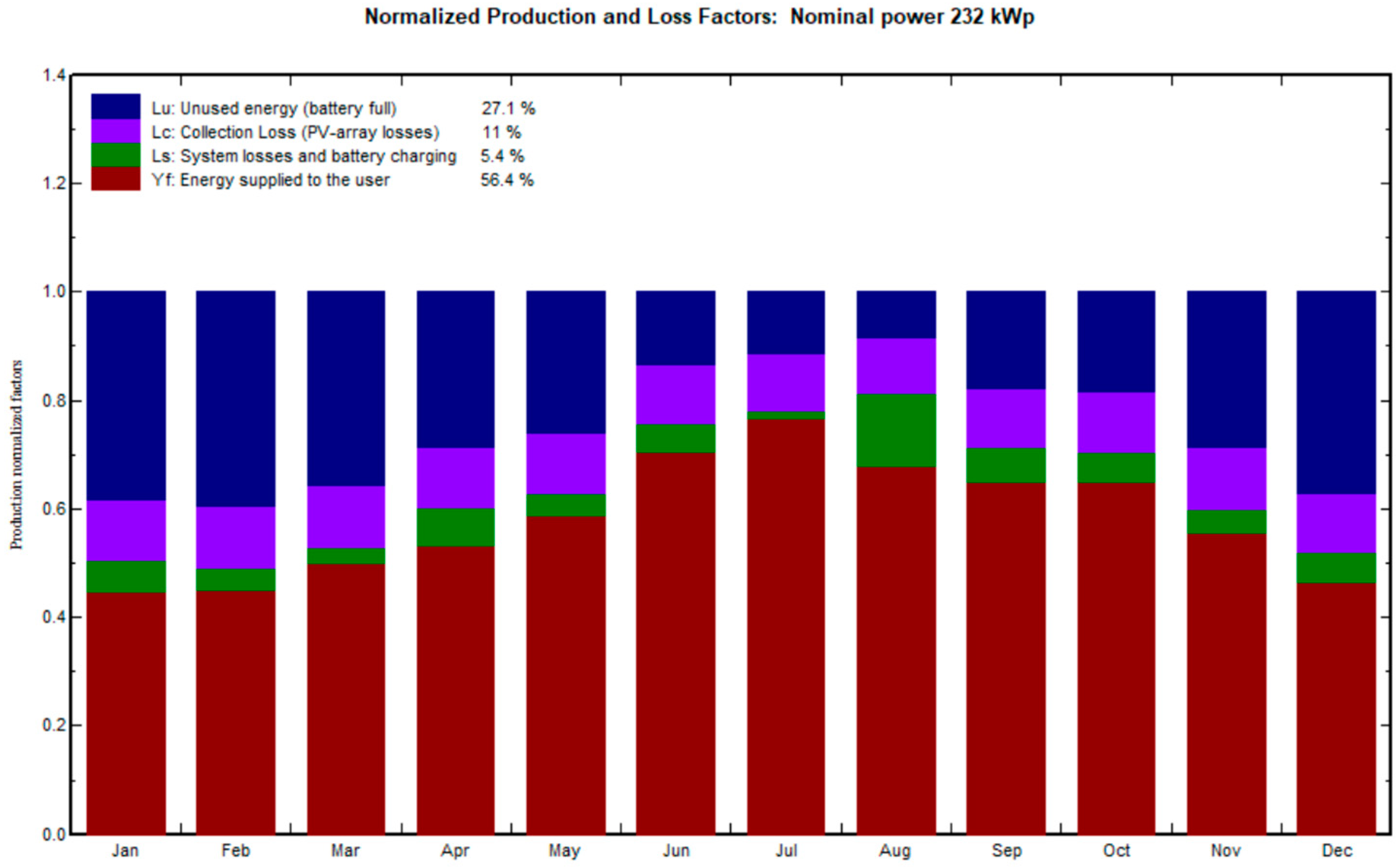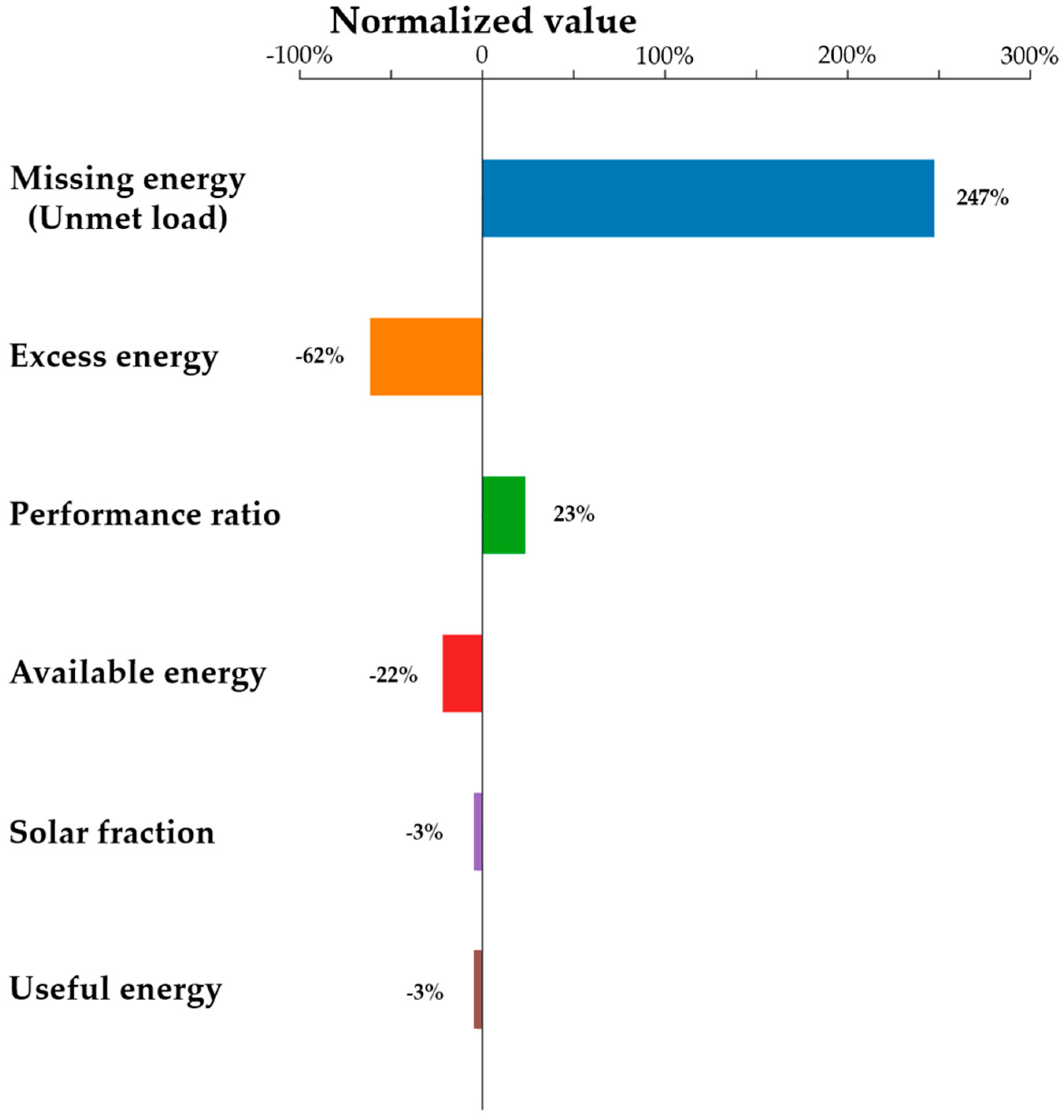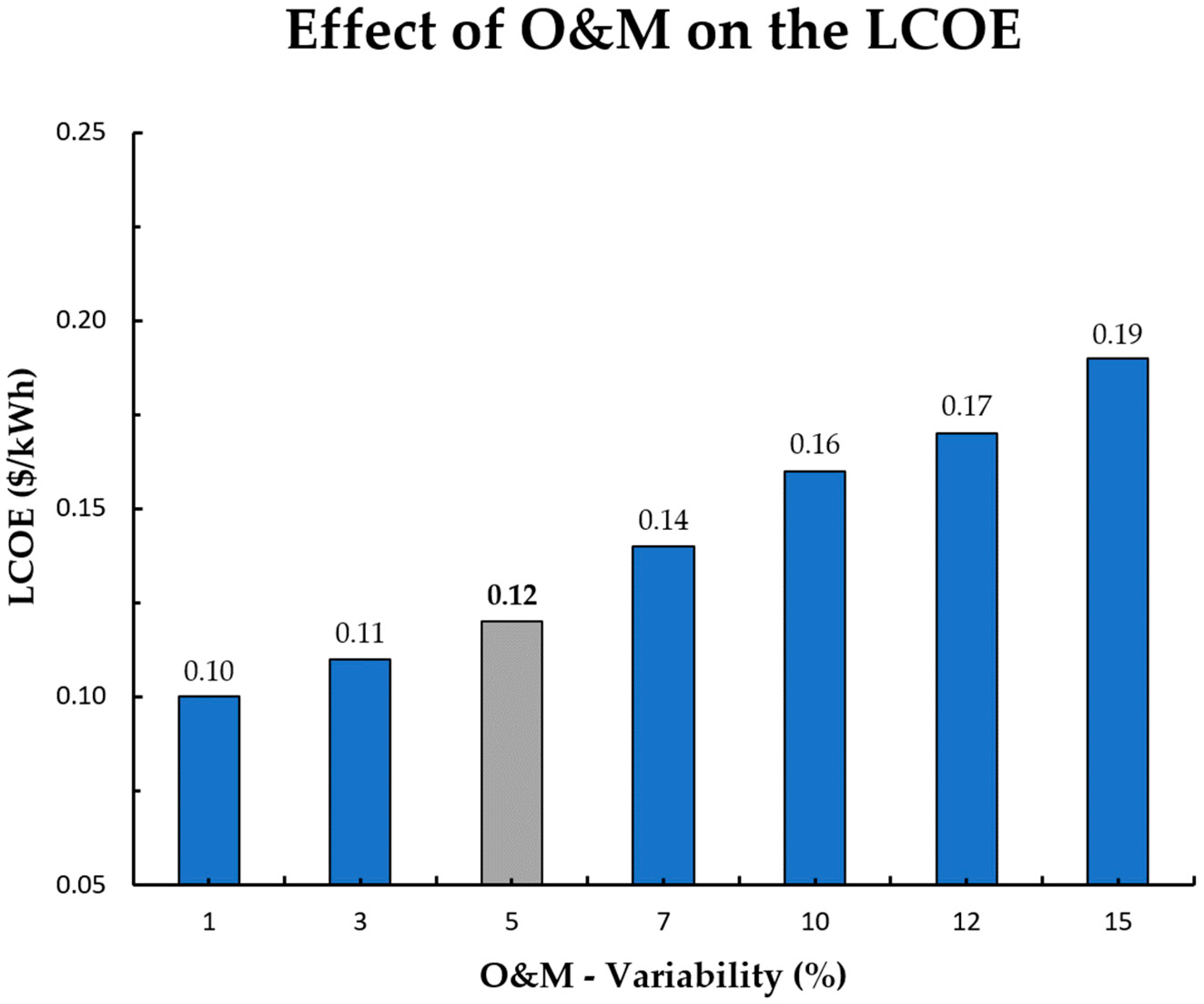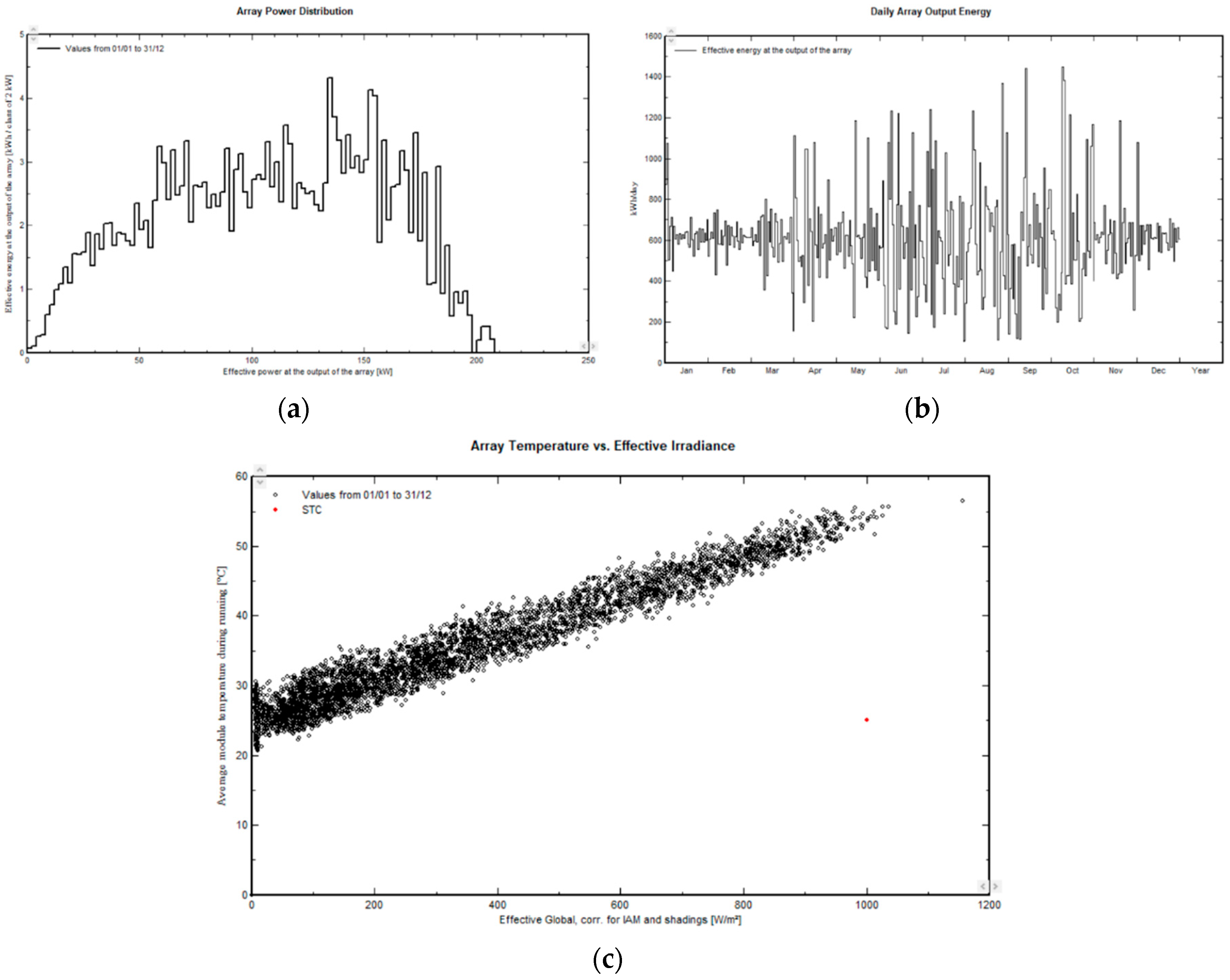1. Introduction
Energy is a basic human need, and its scarcity can significantly impact how we live. When electricity is needed for daily activities ranging from homes to businesses, ensuring its availability and affordability is critical for human survival. Global debates have focused on sustainable energy production and climate change. The International Energy Agency (IEA) predicts that global primary energy demand will rise by 36% from 2008 to 2035, with fossil fuels continuing to dominate the world’s fuel mix, leading to a significant rise in greenhouse gas (GHG) emissions [
1].
Nigeria, the African continent’s most populous country and one of its most prosperous economies, has a sizable electricity installed capacity of about 12,522 MW (from hydro, gas, wind, solar, diesel, and other sources)[
2], with an average daily peak generation of 4,022 MW and off-peak average generation of 3,521 MW. The national power grid provides only 3,941 MW of the generated electricity supplied to the user [
3], which accounts for just 52% of the available generated power, with the deficit being made up by diesel generators. Nonetheless, the nation has a respective transmission and distribution capacity of 7000 MW and 5800 MW, respectively, and is only able to dispatch around 4000 MW most days to users [
3]. Due to the poor generation of available electricity, the country has about 60% electricity access rate (86% in urban areas, and 34% in rural areas) [
4]. Based on the Nigerian Electricity Regulatory Commission (NERC) report, only 8,000 MW of electricity capacity (about 64% of the installed capacity) was available in 2022 [
3], and the national electrification covered only 39% of the nation’s population of more than 200 million people [
5]. Although the Nigerian government plans to add 3,863 MW of additional electricity over the next 24 months, primarily through hydroelectric, solar, and coal plants, the grid’s power supply is still insufficient to meet the nation’s 19,798 MW peak load demand [
6].
Port Harcourt City is in the South-South region of Nigeria at latitude 4.78
° N and longitude 7.01
°E. It is Nigeria’s fifth most populated city, with about 3.3 million people [
7,
8]. Commercial centers are the largest electricity consumers in the city, and due to the grid’s instability, business centers rely entirely on diesel generators for energy generation to maintain supply. Due to the high cost of a liter of diesel compared with the low grid electricity tariff [
6], the cost of power has risen by 23%. This cost is likely going to increase with the Nigerian Federal Government’s removal of fuel subsidies [
9]. The carbon footprint of running these generators, of about 2700 g of CO
2-eq per kWh[
10], is relatively high compared to other forms of electricity generation, even coal is at around 1000 g of CO
2-eq per kWh [
11]. There are calls for developing clean and cost-effective alternative sources of electricity generation, thereby compensating for the national grid’s shortfall [
12,
13]. Standalone solar photovoltaic (PV) systems have been proposed [
14]. Nonetheless, these supermarkets have not taken advantage of this alternative due to the high cost of investment and a lack of awareness of the long-term financial and environmental advantages.
Nigeria, which has tropical and semi-arid weather and is located just a few degrees north of the equator, is endowed with excellent solar energy resources dispersed across the entire country. The daily solar radiation level fluctuates between 4 and 6 kWh/m
2. The yearly sunshine length spans from 1800 to 3000 hours (about 4 months), providing a tremendous opportunity for solar PV systems in grid-connected and off-grid applications [
15]. PV systems can play an essential role in mini-grids and commercial electricity generation plants [
16]. They can boost economic growth, upscale industrial and academic research [
17], reduce carbon emissions, and increase electricity upscaling in off-grid locations.
Several studies in Nigeria have evaluated the installation of grid-tied and off-grid solar PV systems for generating electrical energy. Adaramola [
18] used the HOMER software [
19] to test the potential of an on-grid solar PV system for electrical generation to supply 80 kW in Jos, Nigeria. The author assessed the following parameters: average global (diffuse and direct) solar radiation, annual electricity generation, and levelized cost of electricity (LCOE), with results showing the feasibility of a grid-connected PV system to power 40% of the electricity requirement. The study assumed 6.0 kW/h/m
2/day solar radiation, and the expected annual electricity generation and LCOE were 331,538 kWh and
$0.10 per kWh, respectively. Nonetheless, the author did not consider how to reduce the excess energy produced by the system and its resulting impact on the system’s performance ratio and LCOE.
Oladeji et al [
20] designed an off-grid PV system for a commercial building in northwest Nigeria also using the HOMER software. The authors divided the study into two categories focused on the most common electrical appliances. Category 1, comprised essential load demand, including fluorescent lighting, ceiling fan, computer set, printing machine, fridge, television, and satellite decoder with an average load of 36.34 kWh/day. Category 2, was all load from Category 1 plus the air conditioner system, with an average demand of 198.1 kWh/day. Results indicated that Category 1 was more cost-effective, with a system cost of
$92,450 and LCOE of
$0.53 per kWh, compared with Category 2, which had a system cost of
$505,920 and LCOE of
$0.54 per kWh. However, the authors did not analyze the carbon savings from the system or the variability in the maintenance and operation cost of PV systems in the region.
Using the RETScreen software [
21], Akpan et al., 2013 [
22] used the life cycle cost to evaluate the viability of deploying an off-grid PV system in northeastern Nigeria. The researchers compared the life cycle cost of an off-grid PV system with the price of a modern grid. They concluded that the viability of a standalone PV system depended on the subsidy program and regulatory structures. However, the off-grid PV unit price information or the system’s environmental impact was not provided.
Tijani et al. [
23] used HOMER software to conduct a techno-economic analysis of a hybrid PV-diesel-battery off-grid system for an international college in Northern Nigeria. The authors evaluated four scenarios: a standalone diesel system, a standalone PV system with battery storage, and a hybrid PV-diesel system both with and without battery storage. The results were
$0.54 per kWh for the standalone diesel system,
$0.57 per kWh for the standalone PV system,
$0.63 for hybrid PV-diesel without battery, and
$0.57 per kWh for hybrid PV-diesel with battery. The author recommended that the standalone PV system with battery was the winning configuration because of the emission reduction and uncertainty in the price of diesel. The carbon emissions of the standalone PV system were 8477 kg/year, with a standalone-diesel and a hybrid PV-diesel generator system emitting 141,354 kg/yr. and 144,10 kg/yr. of carbon, respectively. The findings showed that the PV system had a peak power of 120 kW and required 972 m
2 of panels and two batteries (1156 Ah, 12 V).
Using the HOMER software, Modu et al.[
24] conducted a techno-economic analysis of four systems; (1) off-grid PV, (2) standalone diesel, (3) PV-diesel, and (4) PV-diesel-batteries; in Kastina, Northern Nigeria. The PV-diesel battery system had the lowest LCOE when compared to the other three systems. The researchers didn’t specify the amount of carbon dioxide saved by installing an off-grid PV system.
Olusola et al. [
25] analyzed an off-grid residential solar PV system in Jos, Nigeria. The study showed that ten PV modules, each with 275 Wp rating, five 100 Ah batteries, 24/120A charge controller, and 2.5 kW inverter capacity, have the potential to deliver 3132 kWh of electricity annually. Also, the economic assessment showed that the life cycle cost (LCC), annualized LCC, and LCOE were
$10,111,
$594, and
$0.18 per kWh, respectively. The authors concluded that the amount of electricity generated, and the unit cost of electricity are appropriate to support residential household electricity consumption. However, the authors did not calculate the environmental impact of the PV system, or any potential performance losses due to shading. Despite prior studies demonstrating the practicality of grid-connected PV systems and the possibility of PV hybrid systems, research institutes still need to evaluate the feasibility of creating PV systems for off-grid power for commercial uses in Nigeria’s South-South region, specifically, Port Harcourt (PH) city.
This study aims to improve the situation by conducting a techno-economic and environmental assessment of commercial solar PV systems in PH City, Nigeria. The objectives are to conduct a resource assessment, develop a load profile, design a PV system, carry-out an economic assessment, and report on the potential carbon savings [
26]. An energy audit was conducted, PVsyst software [
27] was utilized for PV system modeling, a financial model was developed, and carbon savings were determined using the Tier 1 international panel on climate change (IPCC) GHG emission guidelines, 2006 [
28,
29]. The study was restricted to only supermarkets in Port Harcourt, Nigeria.
4. Results and Discussion
The result for the designed off-grid PV system shown in
Table 13 and
Figure 6 (Top) indicates that the system generates 308,736 kWh/year of available energy, more than enough to meet 100% of the 204,756 kWh/year electrical load of the supermarket at 99% solar fraction and an annual performance ratio (PR) of 56.4%. However, the system only delivered 202467 kWh/year of useful energy to the user; of this amount, 96,678 kWh was delivered from the PV to the user, and 105,789 kWh was delivered to the user after storage in the battery, with missing energy (i.e., unmet load demand) of 2299 kWh/year. The inability of the system to supply the entire available solar energy was the result of losses in the system.
Figure 6.
(Top) PVsyst Simulation Results (Bottom) Nominalized Production and Systems Losses from PVsyst [
26].
Figure 6.
(Top) PVsyst Simulation Results (Bottom) Nominalized Production and Systems Losses from PVsyst [
26].
Table 13.
PVsyst Simulation Result.
Table 13.
PVsyst Simulation Result.
| Month |
E_Available (kWh) |
E_User (kWh) |
E_Unused (kWh) |
E_Losses (kWh) |
E_Missing (kWh) |
Instant Energy from Battery to User (kWh) |
Instant Energy from PV to User (kWh) |
| January |
33,852 |
17,391 |
14,884 |
1,577 |
0 |
10,172 |
7,219 |
| February |
30,233 |
15,708 |
13,820 |
705 |
0 |
9,513 |
6,195 |
| March |
29,995 |
17,391 |
12,434 |
170 |
0 |
10,084 |
7,307 |
| April |
27,249 |
16,830 |
9,047 |
1,372 |
0 |
8,626 |
8,204 |
| May |
25,516 |
17,391 |
7,697 |
428 |
0 |
8,691 |
8,700 |
| June |
20,371 |
16,830 |
3,210 |
331 |
0 |
8,025 |
8,805 |
| July |
19,274 |
17,391 |
2,549 |
666 |
0 |
8,159 |
9,232 |
| August |
20,714 |
16,466 |
2,049 |
1,274 |
925 |
7,132 |
9,334 |
| September |
20,318 |
15,457 |
4,226 |
739 |
1,374 |
7,593 |
7,864 |
| October |
22,744 |
17,391 |
4,887 |
466 |
0 |
8,348 |
9,043 |
| November |
25,955 |
16,830 |
8,688 |
437 |
0 |
8,967 |
7,863 |
| December |
32,517 |
17,391 |
13,890 |
1,236 |
0 |
10,522 |
6,869 |
| Year (kWh/yr.) |
308,738 |
202,467 |
97,381 |
6,591 |
2,299 |
105,789 |
96,678 |
Figure 6 (Bottom) illustrates the PV system’s normalized production and system losses. At 100% of the PV system’s total energy output, the user received 56.4% of the total energy available; 27.1% of the energy was stored in the battery and remained unused at battery full capacity; 11% of the energy produced was lost at the collector (PV-array loss); and the remaining 5.5% of the energy was lost in the system and during battery discharge. These losses originate from irradiance level, temperature, module and string mismatch, converter and battery efficiencies, and wiring. Furthermore, the system yielded 97,381 kWh/year of excess (unused) energy, affecting the system’s PR negatively. The low annual PR was caused by using the month with the minimum peak sunshine hours as the design point to ensure that enough energy was available throughout the year. To improve the performance ratio measures such as optimizing the system design and upgrading components were considered. This unused energy from the baseline system design could be sold back to the grid for additional revenue, which in turn improves the overall PR of the baseline system. As shown in
Figure 7 and
Table 14, it was observed through sensitivity analysis that by using the average peak sunshine hour of the global irradiance to model the system, the available energy was reduced by 22%, the excess energy produced was reduced by over 62%; the PR increased by 23%, the missing energy in this case also increased by 247%, the solar fraction and useful energy reduced by 3% respectively. Thus, even though the PR has increased, the useful energy of 196,780 kWh/year produced by the optimized system is not enough to meet the user load demand of 204,765 kWh/year. Thus, the optimized system will require a backup generator (or other methods) to provide an additional 7985 kWh/year of energy to meet user load demand.
Table 14.
Baseline and Sensitivity Analysis Results Comparison.
Table 14.
Baseline and Sensitivity Analysis Results Comparison.
| Parameter/Variable |
Baseline |
Optimized |
Unit |
| Sh |
3.21 |
4.21 |
h |
| PV Capacity |
231 |
178 |
kW |
| Total Panel |
395 |
304 |
- |
| User Energy Need |
204,765 |
204,765 |
kWh/year |
| Available Energy |
308,736 |
241,630 |
kWh/year |
| Useful Energy |
202,467S |
196,780 |
kWh/year |
| Excess Energy |
97,355 |
37,436 |
kWh/year |
| Missing Energy |
2,299 |
7,987 |
kWh/year |
| Performance Ratio |
56 |
70 |
% |
| Solar Fraction |
99 |
96 |
% |
Figure 7.
Percentage difference between the baseline result over the sensitivity analysis parameters.
Figure 7.
Percentage difference between the baseline result over the sensitivity analysis parameters.
Our results align with Akinsipe et al. [
25], who conducted the design and economic analysis of an off-grid solar PV system in Jos, Nigeria. Their study determined that a 2.75 kW PV module and a 500 Ah battery can meet an annual load demand of 31,322 kWh. Our analysis was comparable because Jos is in northern Nigeria, where the average daily horizontal solar radiation is higher [
57], and the difference in values was a result of the difference in the required load demand.
Figure 8 depicts how the operating and maintenance (O&M) rate affects the system’s LCOE. It illustrates that the LCOE will rise in direct proportion to O&M expenditures. This finding suggests a clear relationship between the O&M rate and the system’s LCOE. The rise in the cost of O&M substantially influences the system’s overall cost-effectiveness, potentially reducing the system’s financial viability.
Figure 8.
Effect of O&M on the System’s LCOE.
Figure 8.
Effect of O&M on the System’s LCOE.
The values in
Figure 8 represent the LCOE values with respect to the PV system’s baseline O&M values of 5% of the initial investment cost It further explains how the LCOE reduces when the O&M is decreased and vice versa.
The amount of energy supplied from the PV array each day changes according to seasonal variations, as shown in
Figure 9. In
Figure 9 (b), daily array output energy depicts that the production energy is even for most of the year as the system was sized with the month with lower horizontal solar irradiance to cover rainfall losses during the rainy season. Furthermore, the array power distribution depicted in
Figure 9 (a) produced a "curve" with high quantities of power generated between 145kW and 160 kW.
Figure 9.
Solar PV system PVsyst output parameters: (a) array power distribution, (b) daily array output energy, (c) array temperature vs effective irradiance [
26].
Figure 9.
Solar PV system PVsyst output parameters: (a) array power distribution, (b) daily array output energy, (c) array temperature vs effective irradiance [
26].
The hottest month in Port Harcourt is in April, according to
Table 4, with an average temperature of 25.3°C; this impacts the working temperatures of the PV array throughout the year, as shown in
Figure 9 (c). High temperatures are predicted to considerably impact the open-circuit voltage and, as a result, the amount of power that the PV array can supply. The PVsyst model resulted in no loss when the horizontal irradiation was converted to the global irradiation incidence. The temperature derating effect (hot and sunny weather) was responsible for the significant loss of 5.8 percent, with converter losses of 4.6 percent, battery roundtrip efficiency loss of 3.6 percent, and 10.6 percent unused energy losses at battery full. The incidence angle modifier (IAM) is responsible for 2.3% losses, including modules and strings mismatch losses of 2.1 percent and cable losses of 1.1 percent. Low irradiance and high STC irradiance levels result in 3.4 percent irradiance level losses. The system loss diagram is shown in Appendix (A).
Table 15 shows the economic assessment of the diesel generator and the proposed solar PV system. The PV-battery system has a higher initial investment cost of
$152864, compared with the existing diesel generation at the cost of
$64,130. The life cycle cost for existing and proposed systems was
$599,794 and
$266,936, respectively. The PV economic model computed the internal rate of return at 20.5%, indicating the rate at which the proposed project will be profitable for investors. The levelized cost of electricity was
$0.12 per kWh, which is comparable to other work done in the region and an improvement on the
$0.36 per kWh existing system cost of electricity for the diesel generator system. The simple payback period for the solar PV system was 4 years; this means it will pay back its cost long before its end-of-life in savings compared with the existing diesel generator system. The solar PV system had a positive net present value (NPV) of
$165,322, indicating its viability. The result is comparable to the off-grid solar application study for residential homes conducted by Okoye et al. in Gusau, Nigeria, where the COE for that system was
$0.40 per kWh [
41]. Ukoima et al. [
54], in their analysis of a solar hybrid electricity generation system for a rural community in Rivers State, considered COE export rates of
$0.10 per kWh and
$0.20 per kWh, which is comparable with this project tariff rate of
$0.20 per kWh used in our financial model analysis.
Table 15.
Economic assessment results.
Table 15.
Economic assessment results.
| Systems |
Initial Investment
Cost
$USD |
Net Present Value (NPV)
$USD |
Life Cycle Cost (LCC)
$USD |
Levelized Cost of Electricity (LCOE) $USD/kWh |
Simple Payback Time (SPBT)
Years |
Internal Rate of Return (IRR)
% |
| Diesel Generation |
64,130 |
-217,205 |
599,794 |
0.36 |
- |
- |
| Proposed solar PV |
152,864 |
165,322 |
266,936 |
0.12 |
4 |
20.5 |
The improvement in the LCOE of this system is a result of improved PV efficiency, system efficiency using the PVsyst software and the change in the interest rate, and the lower cost of solar panels in the Nigerian Market. Similarly, the solar PV off-grid analysis for an office facility in the University of Port Harcourt, Nigeria, by Oko et al. indicated that the cost of electricity was 0.60
$/kWh [
31]. Our study has a lower LCOE even though both studies were conducted in the same city because of the lower cost of solar panels in 2022 compared to 2012 and the improved efficiency of the panels.
The PV-Battery system produced 97,381 kWh/yr. of excess energy, as shown in
Table 13. They are no established wholesale markets in Nigeria. In the absence of that, the state-owned Nigerian Bulk Electricity Trading (NBET) facilitates transactions between energy generators and distributors. The NBET regulation permits bulk purchases of electricity directly from generators at a negotiated Power Purchase Agreement (PPAs). In 2018, BlombergNEF conducted a comprehensive study on on-site solar in Nigeria and determined that solar on commercial and industrial properties can cost between
$0.10 to
$0.20 per kWh [
59]. Also, in 2021, Nigeria’s average urban and rural household spent up to
$0.23 per kWh on petrol generators. According to the State of Global State Minigrids, 2020 report by BlombergNEF, the levelized cost of electricity for mini-grids in Nigeria ranges from
$0.51 to
$1.46 per kWh for solar hybrid residential mini-grids [
59]. Assuming the excess energy produced by the PV-Battery system was sold at
$0.20 per kWh based on the BlombergNEF report, the supermarket will be able to generate an additional net present value income of
$96,360 per year. This will further improve the performance ratio of the system, and at the same time, reduce the LCOE and simple payback time and increase the return on investment.
The emission factor for a diesel generator in terms of carbon footprint ranges from 1.22 kgCO
2/kWh to 1.94 kgCO
2/kWh depending on the rated power (2kW to 5kW) of the diesel generator, according to Alsema et al. [
46] and Jakhrani et al. [
60]. For this study, it is assumed that the emission factor of the diesel generator was 1.94 kgCO2/kWh, and thus taken as the country-specific emission factor for Nigeria. The proposed solar PV generated 7,496,200 kWh of energy over its lifespan.
The proposed solar PV is going to save 14,542,628 kg (about 32,060,969 Ib) of carbon dioxide. Thus, by replacing the diesel generator, 14,543 tonnes of CO
2 are avoided throughout its life span, comparable to 108,488 barrels of diesel fuel that will not be burned for 25 years of the lifespan of the system [
61].
5. Conclusion
A PVsyst software simulation technique was used to execute and assess the feasibility of a solar photovoltaic system to establish the techno-economic and environmental viability for the commercial center’s electricity generation in Port Harcourt, Nigeria. Port Harcourt facility established a daily average solar radiation of 4.21 kWh/m2/day, and a yearly average temperature of 25.73°C. A typical commercial center (Supermarket) in Port Harcourt, Nigeria, requires annual energy demand of 277.74 MWh/year and uses a 100-kW diesel generator to generate its energy. The study shows the feasibility of replacing the diesel generator with a standalone 232-kW solar PV system. The total annual electricity generated and delivered to the facility by the solar PV system was 332.40 MWh compared with the existing diesel generator system. The proposed PV-battery energy system as a clean energy source will reduce carbon emission by 581.70 tons of CO2 each year and 14,543 tonnes of CO2 throughout the project’s 25-year life span. For the economic assessment, The LCOE of the proposed standalone solar PV system was $0.12 per kWh, while the LCOE of using the existing diesel generator as an electricity source was $0.36 per kWh. This will result in total savings of $244,124 over the project’s 25-year life span, with a simple payback time of 4 years and a 20.5% internal rate of return. The excess (unused) energy produced by the PV system can be sold to the grid for extra income, which will reduce the payback time and monetary savings.
The results show that there is great potential for standalone solar PV systems for commercial application in Port Harcourt, Nigeria. Thus, supermarkets in Port Harcourt, Nigeria, are recommended to install stand-alone PV systems, specifically for stores with significant energy consumption, rather than relying entirely on diesel generators. Also, research should be conducted using other clean energy software such as HOMER, RETScreen, PVsol, etc., to establish the technical and economic viability of the project as an alternative to PVsyst for comparative analysis. As fossil fuel prices grow, so will the operational cost increase. The cost of power provided by the diesel generator is rapidly rising. The high amount of carbon emissions from diesel generators is harmful to the environment. Using stand-alone PV systems to supply electricity to supermarkets has shown to be feasible and cost-effective in the long run. This method will help Port Harcourt retail centers decrease fuel costs and minimize carbon emissions produced by generators. Selecting appropriate-sized components is critical since it affects longevity, dependability, and startup costs.
